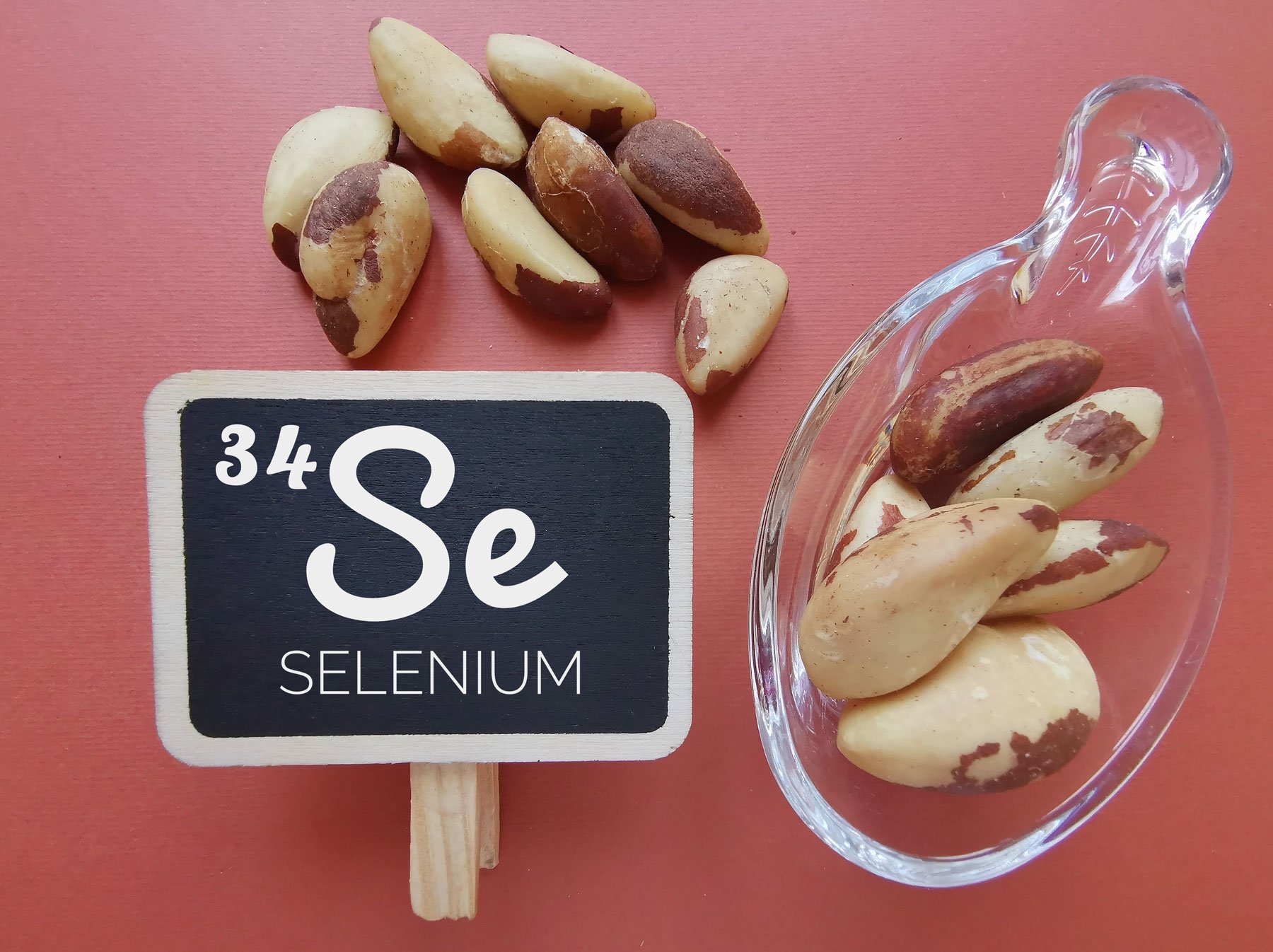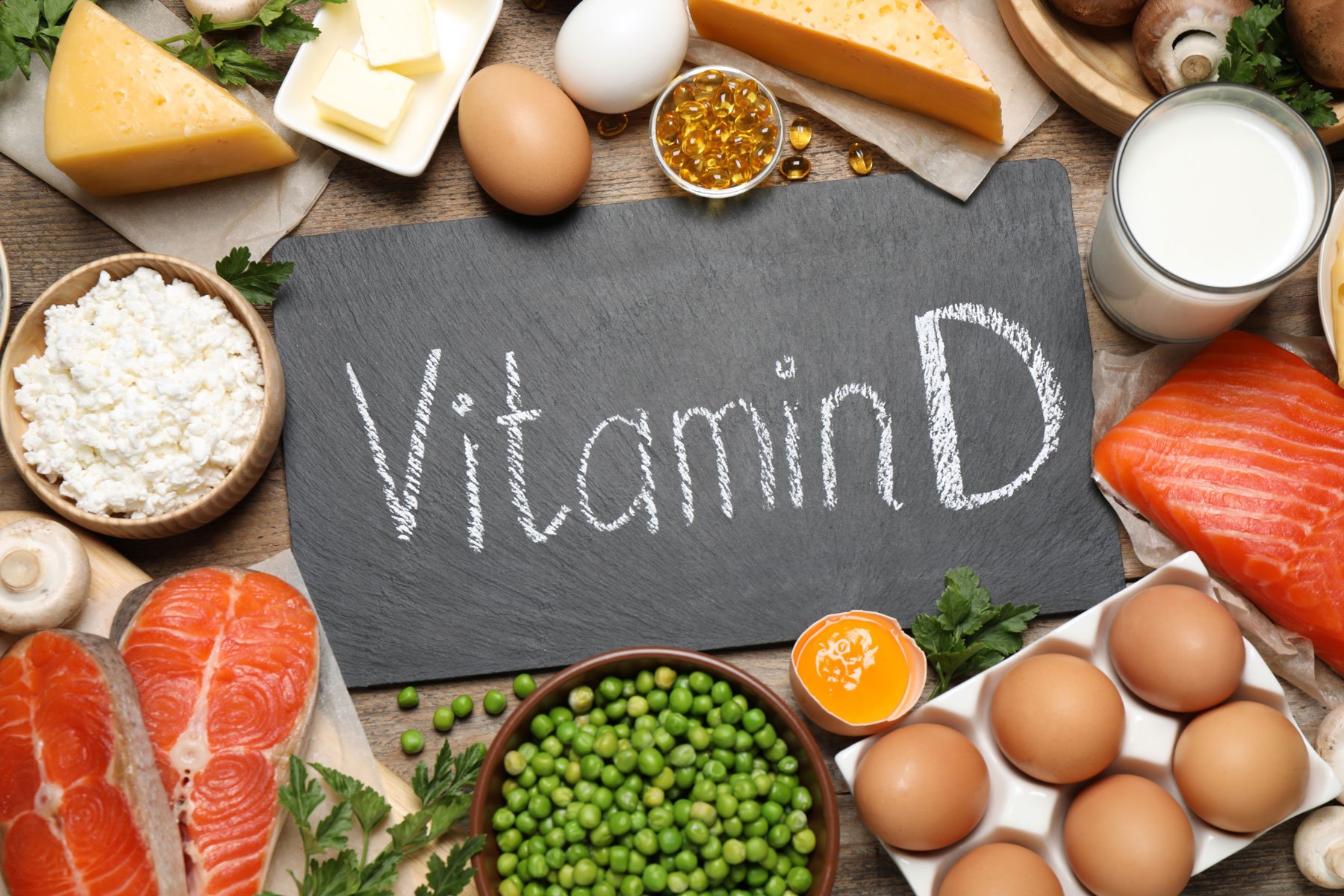Getting sufficient protein in your diet is crucial for maintaining stable blood sugar, strong muscles, and satiety. But among the 20 individual amino acids that comprise protein, do any have unique metabolic benefits that warrant a higher intake? Getting a bit more buzz lately from functional medicine and health optimization experts like Mark Hyman, MD, Peter Attia, MD, and Andrew Huberman, PhD, is glycine—an amino acid that’s relatively abundant in both bone broth and collagen powder but that can also be found as a standalone supplement.
While preliminary research (small human trials and animal studies) suggests glycine may positively influence cardiovascular health, sleep quality, glycemic control, inflammation, and more, findings are inconsistent, and there’s a lot we still need to learn about the long-term safety and efficacy of this amino acid when taken as a supplement. Below, learn more about glycine and its potential perks.
What is glycine?
Glycine is one of the 20 amino acids that your body needs to function properly. Amino acids are considered the “building blocks” of protein, as they’re used to produce various structural proteins within your body, including the myosin in muscles, collagen, and elastin. Amino acids also play an important role in neurotransmitters, hormones, and enzymatic reactions.
Some amino acids are considered essential and must be obtained from food, as your body can’t produce them (just like essential vitamins and minerals must be obtained from food). But glycine is primarily considered a non-essential amino acid because the body can produce it from precursors like choline and the amino acids serine and threonine. Sometimes, however, glycine (along with several other amino acids) is “conditionally essential,” meaning your body may not be able to keep up with production during times of illness and stress, so you’ll need more from dietary sources such as meat, fish, dairy, and legumes.
Glycine plays many roles in the body. To name a few:
- It’s a major structural component of collagen found in skin, bone, muscle, and other connective tissues (comprising every third amino acid in collagen and allowing for its triple helix structure)
- It functions as a neurotransmitter;
- It’s a precursor for glutathione (a potent antioxidant that combats oxidative stress in the body) and creatine (which supplies energy to working muscles)
- It makes enzymes’ active sites more flexible, which enhances enzyme activity and allows them to more efficiently catalyze (or speed up) chemical reactions in the body
- It influences the production of bile acids, which support the emulsification and breakdown of dietary fats and the subsequent absorption of fatty acids and fat-soluble vitamins into circulation via the intestines.
How might glycine affect metabolic health?
Glycine and Sleep Quality
While glycine is touted for a range of benefits, the perk repeatedly mentioned by health experts is better sleep. In fact, health and longevity experts Peter Attia, MD, and Andrew Huberman, PhD, both take 2 g of glycine (along with other supplements like magnesium) several nights per week to support sleep. Although Dr. Attia acknowledged in a 2022 podcast episode that data on glycine and sleep isn’t substantial yet, there are a couple of small studies to support the connection.
In a small 2006 study, 15 participants with chronically poor sleep quality experienced greater subjective improvements in fatigue and felt more clear-headed upon waking after taking 3 g of glycine for four nights within an hour before bedtime compared to a placebo; and in a small 2007 study, the same evening dose was associated with faster sleep onset, subjective improvements in sleep quality, and decreased daytime sleepiness among 11 participants. Animal studies suggest the mechanism behind glycine’s sleep-enhancing effect may be its ability to bind NMDA (N-methyl-D-aspartate) receptors in the brain, which researchers speculate increases peripheral vasodilation (i.e., widening of the blood vessels) and leads to a subsequent reduction in core body temperature by increasing blood flow throughout the body and to skin—and a reduction in core body temperature, in turn, is thought to support sleep. It may also play a role in supporting the production of serotonin, a precursor to melatonin.
Quality sleep, in turn, is incredibly important for glycemic control and regulating appetite. In fact, several studies have found that just one night of poor sleep may promote insulin resistance and impair glucose processing the next day, as well as increase hunger and food cravings, possibly by ramping up production of the hunger hormone ghrelin.
Glycine, Glutathione, and Oxidative Stress
Your body needs glycine, along with the amino acids cysteine and glutamine, to make glutathione—a powerful antioxidant that helps neutralize reactive oxygen species (a type of free radical) caused by factors like poor diet, stress, and pollution that might otherwise contribute to a disease-promoting state of oxidative stress. Keeping oxidative stress in check is important, as it’s been linked to inflammation, insulin resistance, complications of diabetes and metabolic dysfunction, cancer, as well as painful conditions that limit mobility like osteoarthritis. All of this is to say that maintaining healthy levels of glutathione is in your best metabolic interest.
Glycine is considered “rate-limiting” for glutathione production—so when you have less glycine in your diet, your body produces less glutathione. Some experts believe supplementing with a combination of glycine and cysteine in the form of N-acetyl-cysteine (NAC) can boost glutathione synthesis to a greater extent than taking either amino acid alone—which makes intuitive sense since both are required for glutathione synthesis. In turn, the theory goes, this may help improve insulin resistance, diabetes complications, and issues associated with oxidative stress.
In a 2023 study, older adults who supplemented with a combination of glycine and NAC dubbed “GlyNAC” for 16 weeks at a dose of 100 mg/kg per day each had an increase in glutathione levels and improvements in markers of oxidative stress, insulin resistance, inflammation, mitochondrial function, walking speed, and other markers of aging.
But while this research appears to support the indirect antioxidant benefit of glycine and cysteine together (via increased glutathione), studies have not yet sussed out glycine’s benefit specifically.
Glycine and Inflammation
Untamed inflammation is at the root of nearly every chronic disease, including cardiovascular disease and diabetes—and glycine may influence its progression. Preliminary studies on animals and cell cultures suggest that glycine exerts an anti-inflammatory effect by downregulating the pro-inflammatory NF-κB pathway, which results in reduced production of pro-inflammatory cytokines and increased production of anti-inflammatory cytokines. Supplementing with glycine has been proposed as a way to potentially treat conditions with low-grade inflammation, such as obesity. However, there’s no research yet on humans establishing an ideal intake or supplemental dose to promote this anti-inflammatory effect.
Glycine and Blood Glucose
Maintaining stable blood sugar in a healthy range is one of the most effective ways to support metabolic health (which is why continuous glucose monitors [CGMs] can be so effective). A 2008 study on 74 adults with Type 2 diabetes found that supplementing with 5 g of glycine three times per day (15 g per day) for three months was associated with significant reductions in HbA1c (-1.4%) compared to a placebo group (-0.4%), although the mechanism is unclear. HbA1C is a marker of average blood sugar over three months. There were also reductions in fasting glucose and increases in fasting insulin, but these didn’t reach statistically significant levels.
Findings aren’t entirely consistent from trial to trial, however. A 2013 study on 52 adults with metabolic syndrome who also took the same dose of 5 g of glycine per meal (15 g per day) for three months found that although HbA1C levels dropped more in the glycine group (along with systolic blood pressure and markers of oxidative stress), fasting glucose levels actually increased—and this increase was more pronounced for women. Though unclear why, researchers speculate it could be due to increased gluconeogenesis, or the process by which the liver and kidneys create new glucose. More research is needed on the long-term impact of glycine supplementation on glycemic control.
Glycine and NAFLD
Non-alcoholic fatty liver disease (NAFLD) can be triggered by a high-calorie, high-sugar diet, and it’s often considered the liver manifestation of metabolic syndrome. Plasma glycine levels may be around 9-13% lower in patients with NAFLD, but animal studies suggest supplemental glycine could help reduce liver fat accumulation—possibly by boosting levels of the hormones GLP-1 and glucagon, which work in complementary ways to enhance fatty acid beta-oxidation and counter the formation of fatty acids in the liver. However, more research on glycine and fatty liver in humans is needed.
Glycine and Cardiovascular Health
A 2015 study on more than 4,000 adults found an association between higher plasma glycine levels and a lower risk of heart attack after a median of 7 years. As mentioned, glycine appears to help curb oxidative stress and inflammation—and both of these processes can promote cardiovascular disease. However, research is mixed on glycine and stroke risk, with one study suggesting it may reduce the risk of stroke by regulating inflammation and aspects of glucose metabolism, while another found that high-glycine diets were associated with an increased risk of death from stroke in men (but not women).
Glycine and Collagen Production
Glycine plays an important role in the creation of collagen, the most abundant protein in the body, forming a vital component of muscles, tendons, ligaments, and cartilage in joints, bones, and skin. The integrity of these tissues is important for so many reasons, including enhancing and maintaining functional capacity—in other words, ensuring you’re able to move and exercise comfortably, which is crucial for metabolic health. Research on cell cultures suggests that quantities of glycine exceeding what the body can make on its own may help optimize collagen production by cartilage cells, which could help prevent or treat conditions that limit functional capacity, such as osteoarthritis. But again, no effective or recommended dose has been established for this in humans.
How much glycine do you need?
This question is tricky to answer since glycine is technically non-essential (i.e., the body is capable of making it), and yet some research suggests we may benefit from getting more. Here’s what we do know: The body produces around 2.5-3 g of glycine per day from precursors like the amino acid serine, and most people consume around 1.5-3 g of glycine directly from animal and plant protein sources. But some researchers believe this cumulative 4-6 g of glycine per day may not be enough to optimally meet the body’s demands—in a 2009 report, authors write that an average 70 kg (154 lb) adult requires about 15 g of glycine per day to optimally support the synthesis of collagen and other proteins and metabolites. Meaning, we could fall about 10 g short, and it may be worth supplementing to ensure a healthy metabolism, per the authors.
However, the idea that glycine supplementation is necessary for optimal health isn’t widespread, and based on some of the mixed results from the studies above (and the general shortage of high-quality clinical trials), experts haven’t identified optimal doses for various situations.
While prioritizing your dietary intake of protein and glycine-rich foods (more on those below) in general is likely a safe way to get a bit more glycine in your diet, the implications of long-term supplementation, especially at higher doses, are not clear. In general, requirements for different nutrients vary based on your individual health, so it’s best to work with a medical professional who is familiar with glycine to identify the best dose for you.
How do you test your glycine levels?
There’s no widely available glycine test. However, some functional medicine practitioners may use organic acid testing (OAT) to identify increased demand for glycine and other nutrients. OAT measures the levels of different organic compounds in urine that are produced via a variety of important biochemical pathways, including 5-oxoproline (or pyroglutamic acid), a metabolite of the antioxidant glutathione. Some research suggests that elevated levels of 5-oxoproline may indicate glutathione depletion and an increased demand for glycine (a glutathione precursor).
Keep in mind: This type of testing tends to be expensive and not covered by insurance, and it may not be practical or necessary for most people. If interested, it’s worth seeking out the opinion of a reputable functional medicine practitioner. In conventional medicine, OAT is widely used to identify inborn errors of metabolism in newborns, but it’s typically not used in adults.
What are the best foods for glycine?
Glycine is an amino acid, and amino acids are found in proteins—so prioritizing adequate protein intake is your best overall strategy for naturally boosting glycine levels. In an older study from 1980, researchers found that a total daily protein intake of 1.5 g/kg led to increased dietary intake of glycine and increased glycine synthesis in the body compared to an intake of 0.4 g/kg.
Some protein-containing foods with higher glycine content include various fish, meats, dairy products, and legumes. Here are some important factors to consider:
- Glycine is particularly concentrated in the collagen-rich bone, skin, and connective tissue of animals, which is why bone broth, gelatin, and collagen are considered good sources.
- A serving of a popular brand of collagen peptides has 3.7 g glycine (and their gelatin has 3.5 g), which is a bit more than the amount of glycine used in the sleep studies above.
- The amount of glycine and other amino acids in bone broth will vary based on how it was prepared; one popular brand states their products have 1.9 g glycine per serving.
- Tougher cuts of meats that require slow cooking, such as brisket and chuck and shoulder roasts, contain more collagen and, therefore, more glycine.
- As for plants, soybeans appear to have the highest levels of glycine, with around 673 mg per cup of prepared edamame.
Just remember, because glycine can be synthesized from other amino acids, prioritizing protein in general may be more realistic than simply seeking out high-glycine foods.
What about glycine supplements?
Glycine supplements are available as capsules and powders and typically come with recommended doses of 1 to 3 grams per day. You can also find combination glycine and NAC supplements (with 1.8 g each), like the ones used in the glutathione studies mentioned above. It may be worth proceeding with caution at higher doses—and remember, experts like Attia and Huberman have said they stick to a relatively low 2 g/day dose.
Based on the information presented in this article, it’s hard to say for sure if we’re getting optimal amounts of glycine from food or if supplementing is worth it. For the studies mentioned above, glycine taken in doses of 3-15 g for up to three months appears to be safe, but there hasn’t been much research into the long-term safety of glycine supplements. Some sources caution against taking single amino acid supplements due to the fact that large doses of one may lead to poor absorption of others, but it’s not clear if this would happen with glycine supplements.
Choosing a collagen powder (which has more glycine than a typical protein powder) could be a smart way to boost intake of glycine along with other amino acids. These are typically flavorless and dissolve in liquids, making them easy to incorporate into a variety of food and beverages.
If you choose to supplement, seek out brands that have been third-party tested by an independent organization and discuss proper dosing for your needs with a healthcare provider. (Attia uses Thorne Glycine and doesn’t have a financial stake in the company).
As with nearly all supplements, women who are pregnant or breastfeeding should avoid taking glycine supplements before first talking with their doctor.
 Get a better view of your metabolic health
Get a better view of your metabolic health
The best way to understand how well your body processes your diet is with a continuous glucose monitor and an app like Levels to help you interpret the data. Levels members get access to the most advanced CGMs and personalized guidance to build healthy, sustainable habits. Click here to learn more about Levels.

 Get a better view of your metabolic health
Get a better view of your metabolic health






